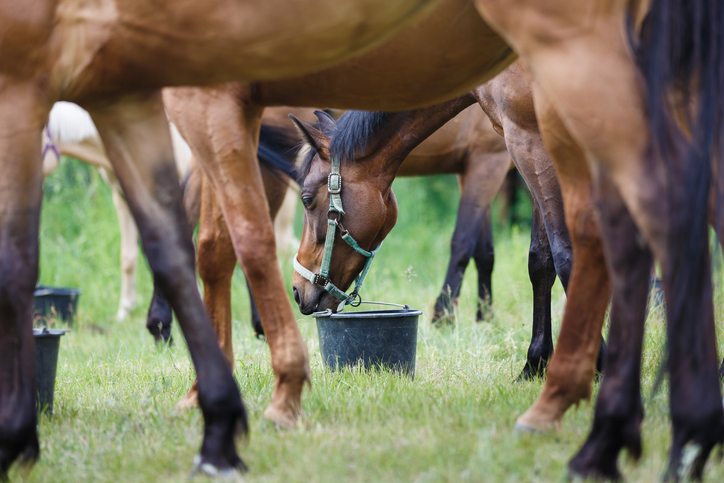
Equines are some of the most challenging yet rewarding animals to work with. Their massive size and remarkable intelligence makes their care and feeding much more difficult when compared with smaller animal care. In particular, proper equine nutrition can be particularly difficult to achieve, regardless the size of your herd. To that end, every producer working with equines should familiarize themselves with the basics of equine feed in order to gain a deeper understanding of how they can benefit their animals’ health.
Equine Feed Ingredients
The equine feeds of yesteryears was typically comprised of alfalfa meal and cereal grains. Modern day feeds are a bit more nutritionally comprehensive and usually include:
- Complex carbs, such as alfalfa, grain hay, and beet pulp
- Simple starches, such as barley, corn, and oats
- Fats, including vegetable, corn, and fish oils
- Proteins, such as dried whey, or linseed and canola meals
- Minerals and vitamins, including calcium, phosphorus, magnesium, sodium, potassium, and chloride
- Digestive aids, such as yeast cultures and Lactobacillus acidophilus
The most common commercial equine feeds will use a combination of the above ingredients, and some may include mold inhibitors and other additives that protect herd health.
Special Considerations for Equine Feed
Feed ingredient evaluation is a critical aspect of ensuring proper herd nutrition. When it comes to reviewing equine feed ingredients, it’s important to look for the seal of the National Animal Supplement Council. Feeds with this seal have been evaluated to ensure that they fully describe all ingredients. This in turn allows you to protect your equines from ingesting feed that could cause illness or negatively affect health.
Equine feed is significantly different from feed created for other kinds of animals, in part because horses are herbivores that are accustomed to grazing throughout the course of the day. Because of this, many farmers encounter challenges when attempting to switch their horses from foraging to eating pelleted feed. Often this problem can easily be solved with additives that enhance the flavors and palatability of equine feed.
If you are considering switching your herd’s feed, it’s considered a “best practice” to perform the change gradually over a period of five to seven days. This method helps avoid upsetting your herd’s digestive systems while allowing them to acclimate to their new feed.
The Key Advantage of Specialized Equine Feed
Equine feeds typically come in pellet form, although some operations choose to let their horses eat traditional forage feed. The best form of feed for your operation will depend on your goals with your equine herd. Despite that, many producers have noted an increase in size and improvement of health in their horses after switching to a pelleted feed. In part this is because the horses are getting the “maximum food value from the food they are eating”.
Specialized equine pellet feed also avoids dustiness, and numerous other troubles that come with storing textured feeds, such as insect infestations, rot, mold, and spoilage. These advantages come at with a slightly increased cost over traditional feed, but the benefits typically outweigh the cost.
Similar to other animal feeds, equine feed removes the horse’s choice of what to eat. This naturally encourages them to consume the nutrients or pelleted feed that they need to grow and maintain optimal health. As a result the overall health of your herd will improve.
Animal feed manufacturers that can master the art of differentiation with high-quality feed additives will be well on their way to establishing themselves as the go-to supplier of animal feed.

